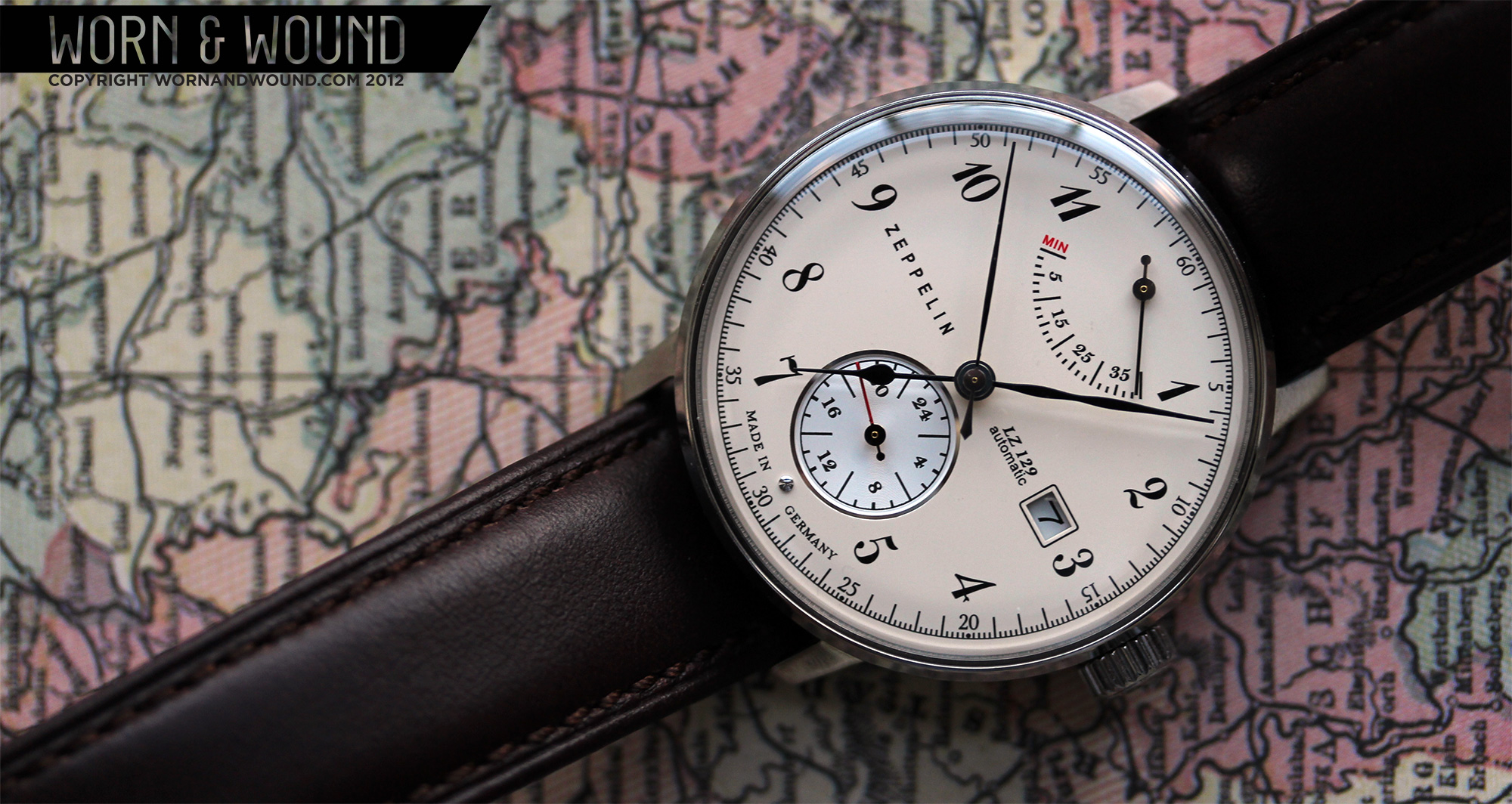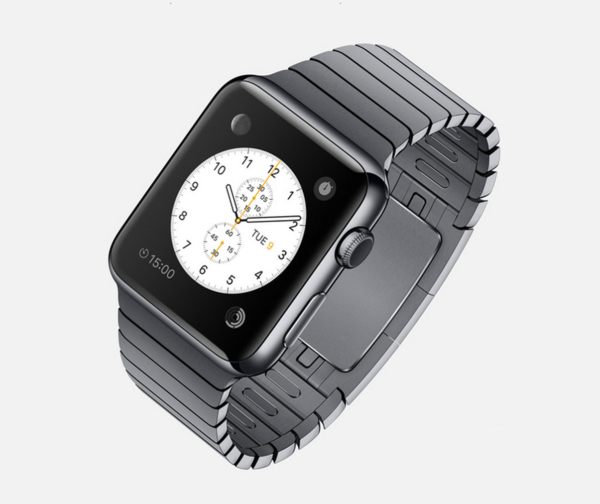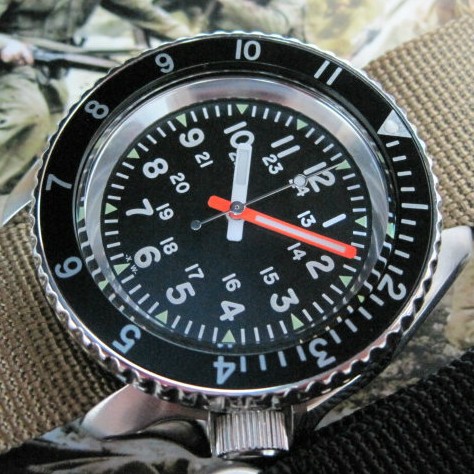The Junkers brand of watches by PointTEC could be generally summarized as budget-minded pilot watches designed to celebrate the work of the inventor Hugo Junkers. The line features both contemporary and vintage styled watches that take design cues from the famous/infamous German Junkers planes, such as corrugated metal faces and altimeter horizon lines. Their newest series, however, takes cues from a different German institution: the Bauhaus. In particular, the new line borrows heavily from the designs of Max Bill. This can be seen in everything from the fonts chosen, to the line weights of the indexes to the off white or black dial options. Yet, while being very clearly a derivative of the Max Bill watches, Junkers was careful not to copy. There are five versions available, each in two color ways and all are in 40mm cases: 2 quartz three-handed models with date, a quartz chronograph (which doesn’t really resemble the chronoscope), an ETA 2824-2 powered model and one with a Miyota 9100, called the 6060.
 The Junker Bauhaus 6060 is by far the most interesting watch in the group. Like I said, the looks are straight Max Bill, with long lines for hours, small dashes for minutes, 5-55 written in small lettering around the perimeter; it’s elegant, design forward, classic. It also sports a 40mm case, which is larger than the 3-hand Max Bills, and likely gives it great wrist presence given the large proportions of the dial. But what interests me the most are the two sub-dials and the movement within. A Miyota 9100 presumably powers the watch (the manufacturer’s website in not specific), which is a 26 jewel automatic with date, 24-hr, day, month and power reserve indicators. Basically, it is a Miyota 9015 with a bunch of extra complications. The 6060 does away with the day and month sub-dials and keeps the 24hr and power reserve. This was a good choice in my opinion, because the additional sub-dials would have thrown off the balance and cleanliness of the dial. Furthermore, day and month indicators, while interesting as complications, are just so unnecessary to the use of a watch.
The Junker Bauhaus 6060 is by far the most interesting watch in the group. Like I said, the looks are straight Max Bill, with long lines for hours, small dashes for minutes, 5-55 written in small lettering around the perimeter; it’s elegant, design forward, classic. It also sports a 40mm case, which is larger than the 3-hand Max Bills, and likely gives it great wrist presence given the large proportions of the dial. But what interests me the most are the two sub-dials and the movement within. A Miyota 9100 presumably powers the watch (the manufacturer’s website in not specific), which is a 26 jewel automatic with date, 24-hr, day, month and power reserve indicators. Basically, it is a Miyota 9015 with a bunch of extra complications. The 6060 does away with the day and month sub-dials and keeps the 24hr and power reserve. This was a good choice in my opinion, because the additional sub-dials would have thrown off the balance and cleanliness of the dial. Furthermore, day and month indicators, while interesting as complications, are just so unnecessary to the use of a watch.
 Getting back to the 6060, the power reserve and 24-hr dials have been very well implemented and do not disturb the Bauhaus/Max Bill aesthetic. The 40-hr power reserve is an arc of thin dashes and numbers from 5 – 35, with “MIN” in red on the left side. The 24-hr dial uses the same line weight and font size as the power reserve with numerals every 3 hours. Both have very understated stick hands for readout. It is important to indicate that this is not a GMT or dual-time zone, just the current time on a 24-hr scale. While I would always choose an original Max Bill over most the Junkers Bauhaus line, I think the 6060-5 could make it’s way into my collection. The seamless integration of the additional functions, the larger case diameter and the reasonable price make this a winner. The watch retails for $550, which is cheaper than any of the Max Bills, and seemingly a great price for what you are getting.
Getting back to the 6060, the power reserve and 24-hr dials have been very well implemented and do not disturb the Bauhaus/Max Bill aesthetic. The 40-hr power reserve is an arc of thin dashes and numbers from 5 – 35, with “MIN” in red on the left side. The 24-hr dial uses the same line weight and font size as the power reserve with numerals every 3 hours. Both have very understated stick hands for readout. It is important to indicate that this is not a GMT or dual-time zone, just the current time on a 24-hr scale. While I would always choose an original Max Bill over most the Junkers Bauhaus line, I think the 6060-5 could make it’s way into my collection. The seamless integration of the additional functions, the larger case diameter and the reasonable price make this a winner. The watch retails for $550, which is cheaper than any of the Max Bills, and seemingly a great price for what you are getting.
 PointTEC are also the manufacturers of the Graf Zeppelin line of watches, which draws upon vintage aviator, art deco and nautical themes, and they use the same movement in the same configuration on their new Hindenburg line (yikes). This watch is also very cool looking, and perhaps a bit more original than the Junkers. If the Bauhaus or Max Bill look doesn’t suit you, this might be right up your alley. The 7060, which is available in three different color ways, is a little bit Marine Chronometer, a little bit pilot and overall very unique. Where as you can pinpoint the source of the Junkers, the 7060 has a fictional quality to it that I find very appealing. It lives up to the majestic and almost absurd nature of Zeppelins, touching on the DNA of “streamline” and “steampunk” design. My personal choice of color way is the cream face with white 24-hr dial, as it looks like a gauge within a clock that was ripped out of a cockpit of an “air-ship“.
PointTEC are also the manufacturers of the Graf Zeppelin line of watches, which draws upon vintage aviator, art deco and nautical themes, and they use the same movement in the same configuration on their new Hindenburg line (yikes). This watch is also very cool looking, and perhaps a bit more original than the Junkers. If the Bauhaus or Max Bill look doesn’t suit you, this might be right up your alley. The 7060, which is available in three different color ways, is a little bit Marine Chronometer, a little bit pilot and overall very unique. Where as you can pinpoint the source of the Junkers, the 7060 has a fictional quality to it that I find very appealing. It lives up to the majestic and almost absurd nature of Zeppelins, touching on the DNA of “streamline” and “steampunk” design. My personal choice of color way is the cream face with white 24-hr dial, as it looks like a gauge within a clock that was ripped out of a cockpit of an “air-ship“.
by Zach Weiss









 Featured Videos
Featured Videos







